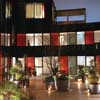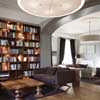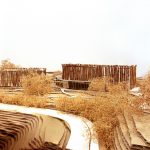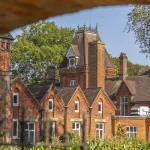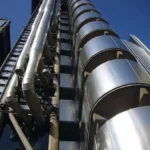Montpellier Chapter Hotel Cheltenham, Gloucestershire Architecture, Buildings, Architects, Design
Montpellier Chapter Cheltenham
New Hotel in Gloucestershire design by make architects, England, UK
21 Mar 2011
Montpellier Chapter Hotel Cheltenham
Make’s first hotel opens for business
Make has completed its first hotel, the Montpellier Chapter in Cheltenham, to start a new brand of UK hotels for Swire Hotels.
Located in the Bayshill conservation area, this Grade II listed Victorian villa mansion was first converted into a hotel in the 1890s. Various extensions were added over the course of a century, each one further diluting the quality and character of the original building. Make was commissioned to revive the hotel by unifying the various disparate elements, simplifying circulation and creating a balance between the original features and modern additions.
Philip Twiss, project architect and partner at Make, said: “The Montpellier Chapter is the first UK hotel for Hong Kong-founded Swire Hotels and the first of the Chapter brand. The project was unusual in that the original brief was left deliberately loose, initially consisting of a design ‘DNA’ and vision statement only.
This was great because, rather than having strict brand standards applied to the interior design, this allowed us to evolve the brand with the client as the architectural design developed in a holistic way. The result is an entirely unified design that is appropriate to the listed building itself, for Cheltenham as a whole and, we feel, a fantastic first scheme for the new Chapter brand.”
A new extension, ‘the Crescent’, connects the existing wings of the hotel and creates a social courtyard space at the centre. The Crescent completes the building to the rear and the sensitive, simple form of this elevation ensures that the modern architecture does not overpower the existing historic building. The graceful curve of the Crescent is articulated through a fan of full-height Bath stone ashlar walls and vertical windows, offset to provide privacy.
The courtyard is enclosed by a veil of coloured facetted glass that flows around the courtyard and seamlessly links the original villa to the crescent extension, unifying the hotel. Taking reference from the red glazing and bronze featured elsewhere within the original villa building, claret glazing panels and bronze framing add to the visual interest. The red glass cascades down the veil, echoing the different storey heights of each wing, while the facets animate the space with reflections.
The main villa has undergone extensive conservation and repair, which has been carefully balanced with modernisation. Lathe and plaster walls and ceilings have been repaired and sash windows, ornate plaster mouldings and ceiling roses have been expertly restored along with fireplaces and flooring.
Internally, guestrooms in the Crescent are designed to be notably different to those in the original villa, but a unified approach to the interior design through the use of common materials and detailing allows the difference between the old and new structures to be sensitively articulated. The guestrooms also feature tailor-made European Oak joinery designed by Make, sanitaryware by Villeroy and Boch and brassware by Zuchetti. In addition, the hotel boasts a thoughtfully curated art collection put together under the guidance of Central Saint Martin’s College, comprising over 160 pieces by leading contemporary artists and students.
Award-winning British designer Matthew Hilton was brought on board to create bespoke solid wood furniture throughout the rooms as well as the public spaces. Stand-out items include his signature Hepburn sofas in the reception area, I-beam tables in the library and desk chairs in each bedroom. The roof of the Crescent has been planted with wild flowers and sedum to increase the biodiversity of the site and help with water retention as part of a sustainable urban drainage strategy; a solar array provides hot water for the hotel’s kitchens.
The hotel features 61 bedrooms including a penthouse with private roof terrace, while the public spaces include a restaurant, drawing room, library, bar and snug, two private dining rooms with built-in wine cellars, garden room, conservatory, central courtyard and a spa (set to open later in 2011).
About Make
Make is a studio of architects and designers committed to designing buildings, spaces and places which are as striking and innovative as they are socially, economically and environmentally responsible. Founded by Ken Shuttleworth in January 2004, the practice has already established itself as one of the UK’s foremost architectural firms. Current projects range in scale from private houses, residential towers and office developments to hospitals and urban masterplans.
About Chapter Hotels
Swire Hotels has launched a new brand, Chapter Hotels, which will operate superb quality, excellent value contemporary hotels, each drawing inspiration from their location in the heart of great British towns and cities. Set in period buildings, each Hotel will be rooted in its location and reflective of the individual skills and passions of the architects, artists and artisans who have collaborated in the creation. The Montpellier Chapter in Cheltenham opened on 29th November 2010 and is the first Chapter Hotel. The second Chapter Hotel will open in Exeter in 2012.
About Swire Hotels
Swire Hotels has been created to manage intriguing urban hotels in Hong Kong, Mainland China and the United Kingdom, providing a luxury experience for travellers who seek individuality, style and personalised service. The award-winning hotels, the Opposite House in Beijing and the Upper House in Hong Kong, opened in 2008 and 2009 respectively. A 345-room lifestyle business hotel called EAST opened in Hong Kong’s Island East in January 2010.
Montpellier Chapter Hotel Cheltenham mages / information from make architects
make architects
Location: Cheltenham, England, UK
English Architecture
Contemporary Architecture in England
English Architecture Design – chronological list
Gloucestershire Building Designs
Gloucestershire Architecture – Selection
Underhill House, Cotswolds
Seymour-Smith Architects

image from architect
Underhill House
Cheltenham’s Art Gallery & Museum – new building development
Berman Guedes Stretton – winner: RIBA Competition
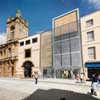
image from architects
Cheltenham Art Gallery & Museum
Gloucester Language Immersion Centre
Feilden Clegg Bradley Studios
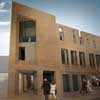
image © Feilden Clegg Bradley Studios
Gloucester Language Immersion Centre
Maggies Cotswolds, Cheltenham
MacCormac Jamieson Prichard
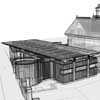
image © Maggie’s Centres
Maggies Cheltenham
The Parabola Arts Centre at Cheltenham Ladies’ College
Foster Wilson Architects

photo © James Brittain
Cheltenham Ladies’ College Building
County Architecture near to Gloucestershire
Buildings / photos for the Montpellier Chapter Hotel Cheltenham page welcome

